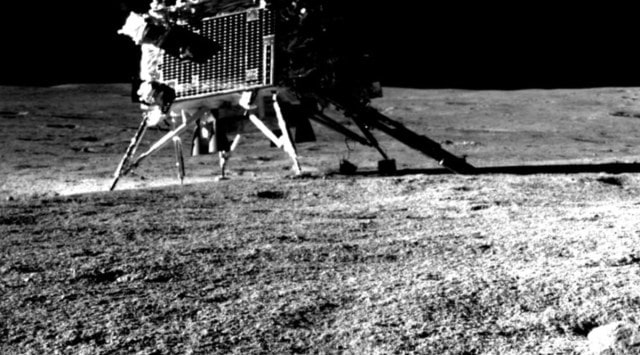Chandrayaan-3 goes dark again? Former ISRO chief says ‘no hope of reviving’ Vikram lander & Pragyan rover
Former ISRO chairman, AS Kiran Kumar, has shared his thoughts on Vikram lander and Pragyan rover that were put on sleep mode in early September.
 On August 23, India created history after Chandrayaan-3 made it the first country to have a soft landing near the lunar south pole. (Image: ISRO)
On August 23, India created history after Chandrayaan-3 made it the first country to have a soft landing near the lunar south pole. (Image: ISRO) After days of anticipation, now it seems there is no chance of Chandrayaan-3’s moon lander and rover waking up. According to space scientist and former ISRO chairman, AS Kiran Kumar, there is no hope of reviving India’s third lunar mission.
On September 22, after a new lunar day began, ISRO stated that efforts were made to establish contact with the Vikram lander and Pragyan rover, both powered by solar energy. However, despite efforts, there have been no signals received from either the lander or the rover.
“No, no, there won’t be any more hope of reviving. Now, if it should have happened, it should have happened by now. There is (now) no chance at all,” Kumar was quoted as saying by PTI.
On August 23, India created history after Chandrayaan-3 achieved a soft landing near the lunar south pole. India is now the fourth nation to achieve a soft landing on the Moon after the US, China, and the former Soviet Union.
It is to be noted that ISRO put the lander and rover into sleep mode on September 4 and 2, before sunset on the moon, hoping to revive it during the next sunrise around September 22. Both Vikram lander and Pragyan rover have been designed to operate for one whole lunar day which is about 14 days on Earth.
Meanwhile, ISRO officials have asserted that Chandrayan-3 has accomplished its objectives. These objectives are demonstrating a safe and soft landing on the lunar surface, demonstrating rover movement on the moon, and conducting in-situ scientific experiments on the lunar surface. After its landing, scientific payloads of the lander and the rover conducted successive experiments to accomplish all of them in 14 earth days.
On September 4, ISRO stated that the Vikram lander had exceeded its mission goals. It effectively conducted a ‘hop’ test where, upon command, it fired up its engines, lifted itself approximately 40 cm, and landed securely 30-40 cm away. This initial step is seen as a success as it paved the way for future sample collection on manned space missions. Meanwhile, on September 2, the space agency reported that the rover had finished all its tasks.







